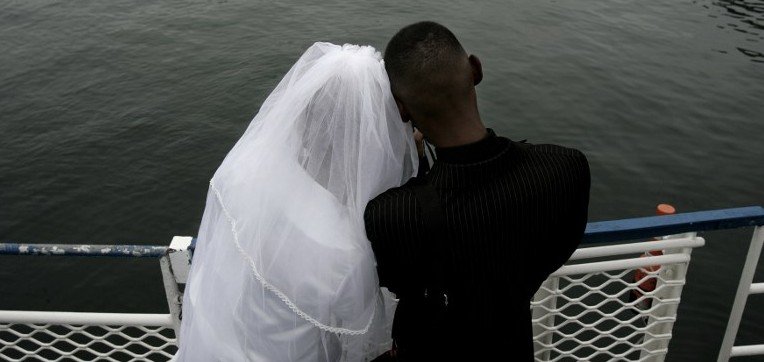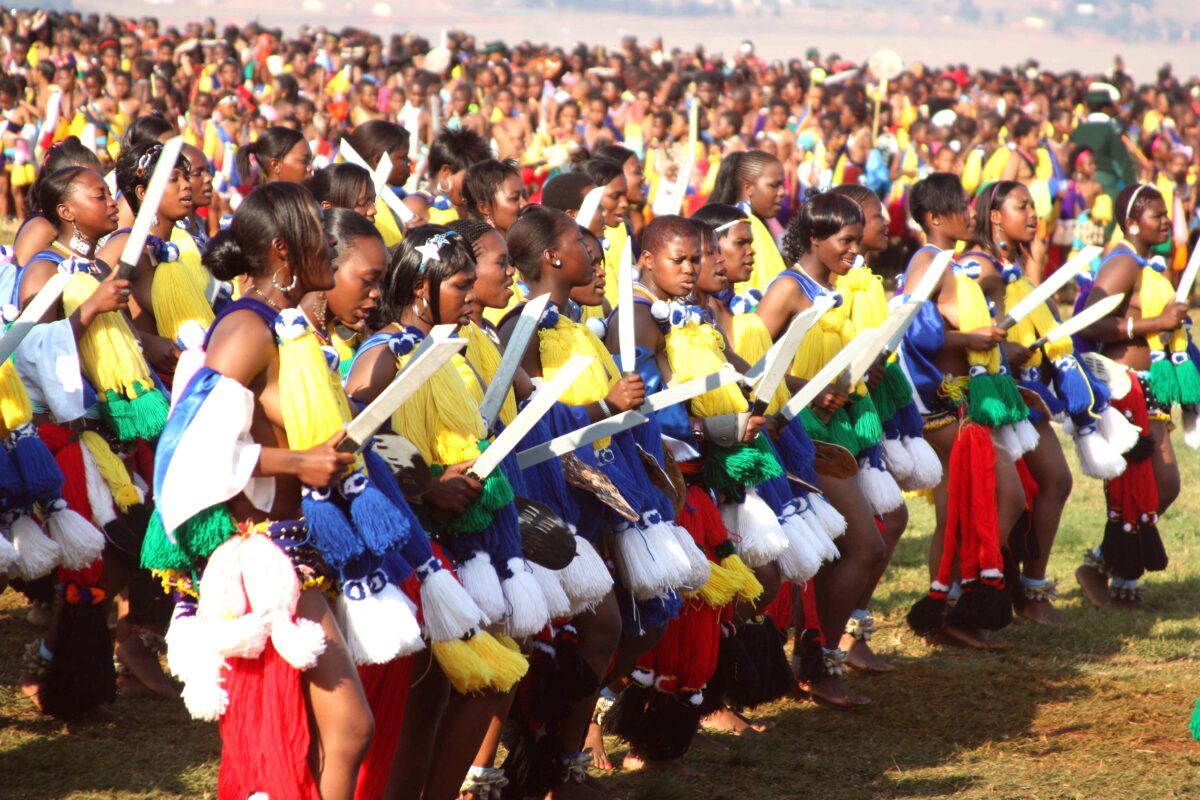Too Young to Marry: End Child Marriage, because they are School girls, not brides

Roughly one in three girls in the developing world marry before age 18; one in nine marries before turning 15. Nisha Varia writes on why serious attention should be paid to ending the scourge of child marriage for good. And the time to act is now.
Sharon ’s marriage at age 14 in Tanzania dashed her hopes for the future: “My dream was to study to be a journalist. Until today, when I watch news or listen to the radio and someone is reading news, it causes me a lot of pain because I wish it were me.”
Around the world, marriage is often idealised as ushering in love, happiness, and security. But for Sharon and other girls, getting married is often one of the worst things that can happen.

Human Rights Watch investigations in Afghanistan, Bangladesh, Malawi, Nepal, South Sudan, Tanzania, Yemen, and Zimbabwe have found that early marriage has dire lifelong consequences—often completely halting or crippling a girl’s ability to realize a wide range of human rights. Leaving school early both contributes to, and results from, marrying young. Other impacts include marital rape, heightened risk of domestic violence, poor access to decent work, exploitation doing unpaid labour, risk of HIV transmission, and a range of health problems due to early childbearing.
At present, unprecedented attention is being paid to child marriage globally. Last November, thousands of stakeholders gathered in the Zambian capital Lusaka, for the first African Girls’ Summit to call for legal reform and share information about both good practices and challenges to ending child marriage in Africa. Prominent voices in and out of government, such as Joyce Banda, the former president of Malawi have publicly committed to fighting child marriage. In April 2015, Malawi adopted a new law setting the minimum age of marriage at 18; however, it does not override the constitution, which does not explicitly prohibit child marriage under 15, and allows 15- to 18-year-olds to marry with parental consent.
International donors, United Nations agencies, and civil society groups, including Girls Not Brides, a coalition of more than 500 organisations worldwide, have also rallied behind the cause. The challenges are formidable. Child marriage—fueled by poverty and deeply rooted norms that undervalue and discriminate against girls—will not disappear if the concerted attention it now enjoys subsides in favour of the next hot-button issue.
(Above) Young girls dance before Swaziland’s King Mswati III (not in the picture) during the traditional “Umhlanga” ceremony known as the Reed Dance at which, girls from across Swaziland (some as young as ten) make a pilgrimage into the surrounding hills where they cut reeds they will present to the royal kraal. Some believe the king will choose them as his next bride, when they eventually dance before him bare-breasted and in full, traditional regalia during the final ceremony. AFP PHOTO / Jinty Jackson
A recent development may help sustain attention: the UN Sustainable Development Goals adopted in September 2015 include eliminating child marriage as a key target by 2030 for advancing gender equality.Meeting this target requires a combination of approaches that have proved difficult to achieve for other women’s rights issues: a commitment of political will and resources over many years; willingness to acknowledge adolescent girls’ sexuality and empower them with information and choices; and true coordination across various sectors, including education, health, justice, and economic development.
Tackling the Roots of Child Marriage
“I faced a lot of problems in marriage. I was young and did not know how to be a wife. I was pregnant, had to look after my husband, do housework, deal with in-laws, and work on the farm. My worst time was when I was pregnant; I had to do all this and deal with a pregnancy while I was just a child myself,” laments Elina V. who was forced to get married at age 15, in Malawi.
The main causes of child marriage vary across regions and communities but often center around control over girls’ sexuality. In some countries, such as Tanzania, Human Rights Watch interviewed many girls who said they felt forced to marry after becoming pregnant. A common thread is that most girls—economically dependent, with little autonomy or support, and pressured by social norms—feel they had no choice but to comply with their parents’ wishes.
“I told my father, ‘I don’t want to marry to this man.’ He said, ‘I love the cattle that this man has, you will marry him.”
Discriminatory gender norms in many places, including traditions that dictate that a girl live with her husband’s family, while a boy remains with and financially supports his parents, contributes to perceptions that daughters are an economic burden while sons are a long-term investment.

Teenage girls sit in a care centre in Palmerton. The teenagers, were forced into arranged marriages, a practise being revived by poor, rural South African families desperate for money. AFP PHOTO / ALEXANDER JOE
Poor access to quality education is another contributing factor. When schools are too far away, too expensive, or the journey too dangerous, families often pull out their girls or they drop out on their own and are subsequently much more likely to be married off.
“I faced a lot of problems in marriage. I was young and did not know how to be a wife. I was pregnant, had to look after my husband, do housework, deal with in-laws, and work on the farm”
Girls may also be kept out of school because they are expected to work instead, either in the home, or sometimes as paid labour from young ages. These same drawbacks, combined with lack of support from school administrators or from husbands and in-laws, often prevent married girls from continuing their education.
Dowry can be another factor in child marriage. In South Sudan for example, the girl’s family will receive dowry from the groom, either in the form of cattle, an important economic asset, or money. Ayen C, from Bor County, explains her situation: “My husband paid 75 cows as dowry for me. We never talked or courted before we got married. When I learned about the marriage, I felt very bitter. I told my father, ‘I don’t want to go to this man.’ He said, ‘You have to, I loved the cattle that this man has, you will marry him.’”
Once married off, many girls have little access to sexual and reproductive health information and services—whether on how one gets pregnant, reliable contraception methods, protection against sexually transmitted infections, prenatal services, or emergency obstetric care.
As a result, child marriage is closely linked to early—and risky—childbearing. The consequences can be fatal: complications from pregnancy and childbirth are the second-leading cause of death for girls ages 15 to 19 globally. In other cases, the stress of delivery in physically immature bodies can cause obstetric fistulas, a tear between a girl’s vagina and rectum that results in constant leaking of urine and faeces. Girls suffering this condition are often ostracized and abandoned by their families and communities.
According to 2013 data, 74 percent of new HIV infections among African adolescents are in girls, many of them in the context of marriage where limited agency in the relationship and pressure to have children contribute to lack of condom use.
Domestic violence is another risk of marriage, perpetrated by a girl’s husband or in-laws, including psychological, physical, and sexual violence, such as marital rape. While not all child marriages are marked by domestic violence, the risk increases when there are large age gaps between a girl and her husband.
Many countries fail to criminalise marital rape, and even when it is a crime, child brides have little ability to seek help. And in general, limited information about their rights, lack of access to services especially legal assistance and emergency shelters, discriminatory divorce, inheritance, and custody laws, and rejection from their own families, can leave many trapped in abusive marriages with no means of escape.
While not all child marriages are marked by domestic violence, the risk increases when there are large age gaps between a girl and her husband.
Armed conflict heightens girls’ risk of child marriage and other abuses. For example, forced marriage of girls is a devastating tactic of war used by extremist groups such as Boko Haram in Nigeria.
The Way Forward
While the harms caused by child marriage are grim, the benefits of ending the practice are transformative and far-reaching. Tackling child marriage is a strategic way to advance women’s rights and empowerment in several areas, ranging from health, education, work, freedom from violence, and participation in public life.
But child marriage is complex and varies widely around the world. Governments committed to achieving the Sustainable Development Goals target of ending child marriage by 2030 will need to employ a holistic, comprehensive approach that is tailored to local contexts and diverse communities.
Governments and donors should rally around the idea that a 12-year-old girl should be in school rather than a marriage.

Adopting and implementing cohesive national legal frameworks that uphold international human rights standards is key. This includes making 18 the minimum marriage age, avoiding loopholes such as exceptions for parental consent, ensuring the laws require free and full consent of both spouses, requiring proof of age before marriage licenses are issued, and imposing penalties on anyone who threatens or harms anyone who refuses to marry.
Governments should ensure these protections are not undermined by religious or customary laws and traditions, and should regularly engage with religious and community leaders.
The effort to end child marriage cannot succeed without greater acceptance of adolescent girls’ sexuality and their rights to make their own informed choices about their bodies, their relationships, and their sexual activity. Governments and donors should rally around the idea that a 12-year-old girl should be in school rather than a marriage.
Nisha Varia is advocacy director for the Women’s Rights Division at Human Rights Watch


















